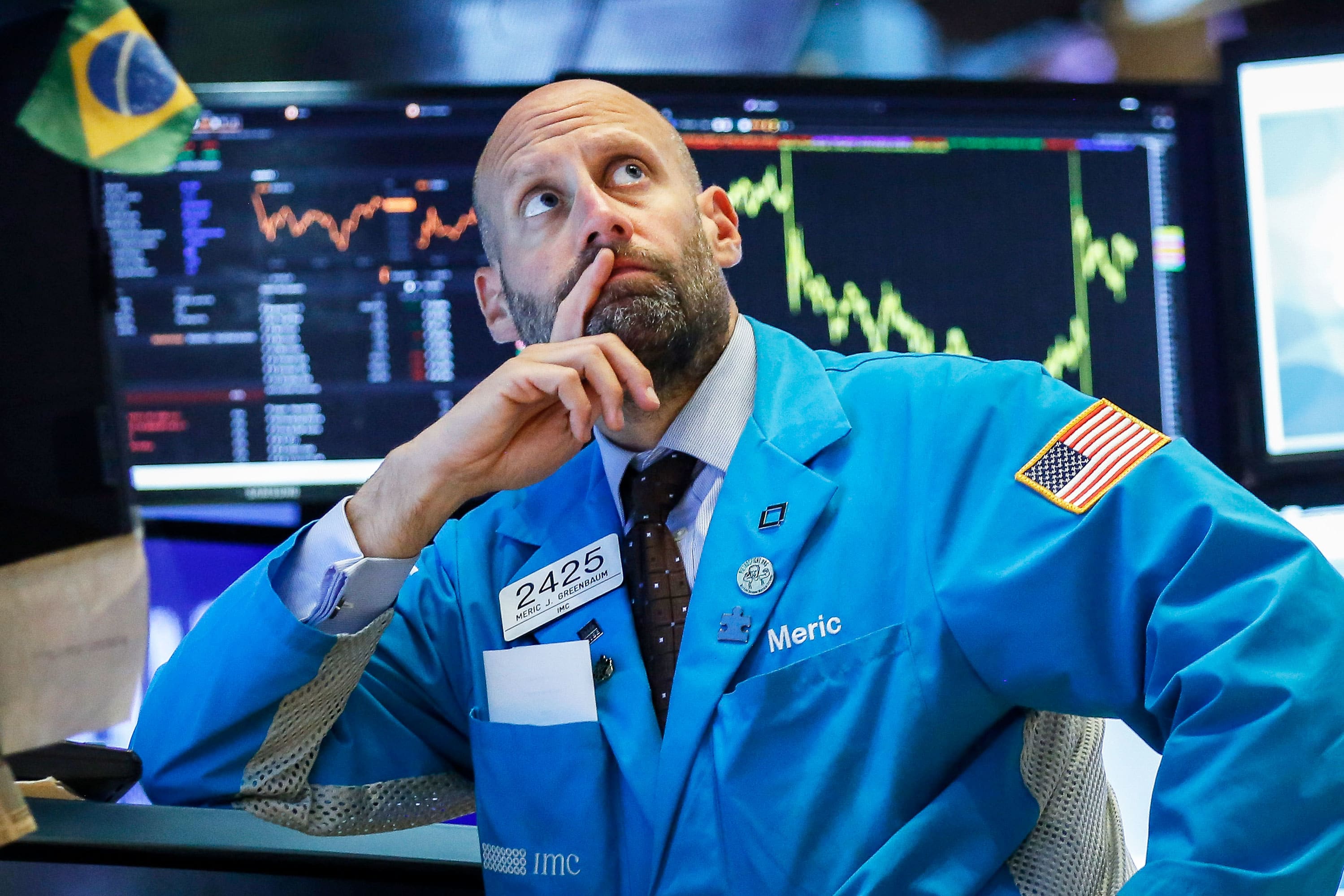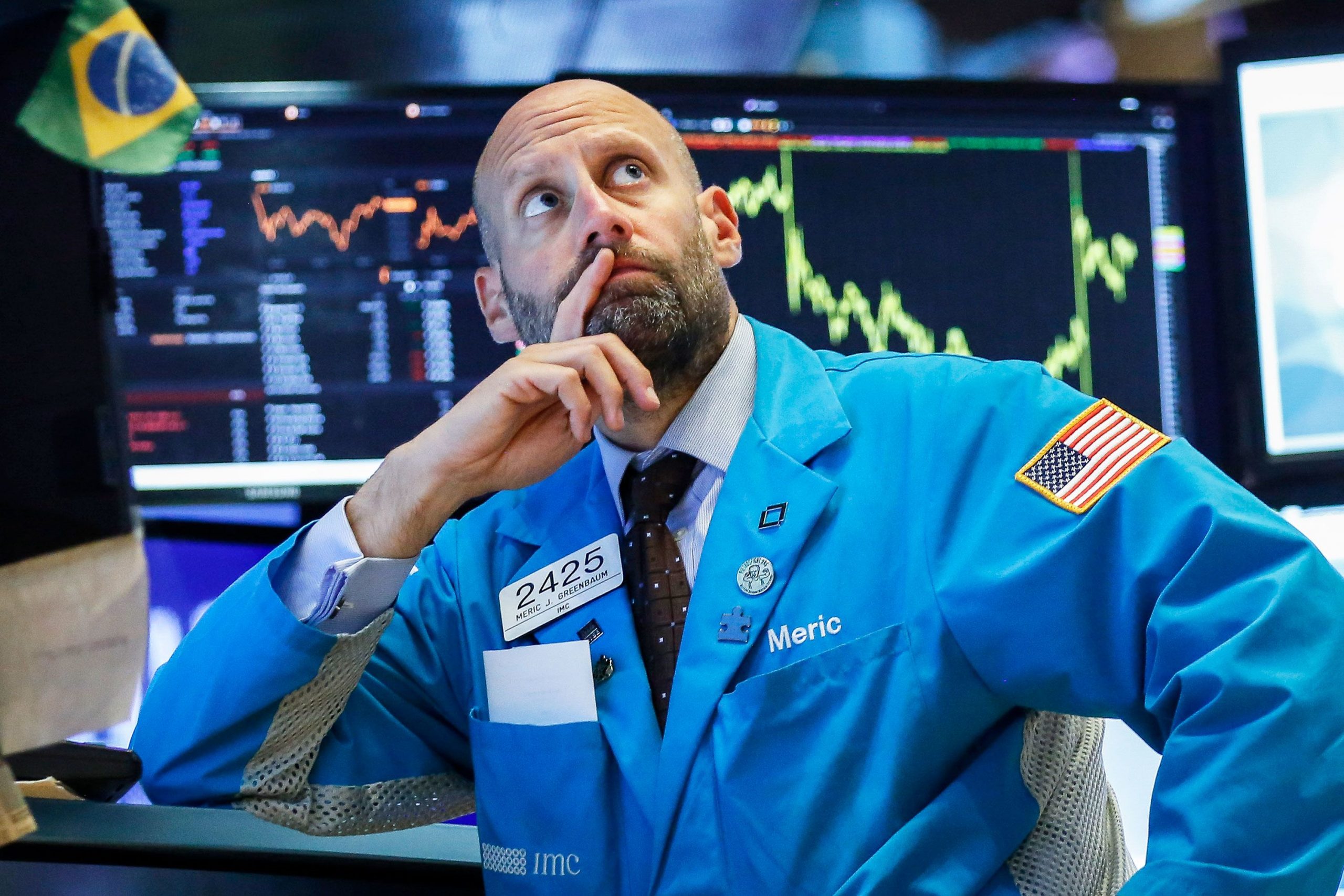
A trader works ahead of the closing bell on the floor of the New York Stock Exchange, June 19, 2019 in New York City.
Drew Angerer | Getty Images
U.S. consumer spending, the biggest part of the economy, saved the day for the record-long expansion, but a big decline in business investments raised concerns about how much longer it can last.
Personal consumption expenditures rose 4.3% in the second quarter, the best performance in six quarters, whereas gross private domestic investment tumbled 5.5%, the worst since the fourth quarter in 2015 as spending on structures slumped 10.6%. The drop in business spending chopped a full percentage point off of the final GDP number.
“The fact the investment looks so weak reflects that global forces are creating challenges for business investment and those forces mostly owe to the trade war. It has weakened the trajectory for here in the U.S.,” said Michelle Meyer, head of U.S. economics at Bank of America. “The consumer is much more insulated from those risks.”
The current economic expansion keeps trucking along, officially marking the longest in U.S. history. GDP rose 2.1% in the second quarter, down from 3.1% in the first quarter but slightly higher than the 2% estimates. However, with the boost from 2018 tax cuts fading away and trade tensions weighing on businesses, the weakness in business spending has economists worried how long the consumer can keep carrying the economy.
“Soft business investment in the second quarter is a concern. Some of that was tied to a downturn in investment in energy as commodity prices fell. It could also be that businesses are holding back on capital spending because of trade tensions and associated uncertainty,” PNC Chief Economist Gus Faucher said.
“Consumer spending won’t continue to grow at a 4% pace, but solid job growth and rising wages will allow households to increase their spending through the rest of this year and into 2020,” Faucher added.
‘One-time release’ for consumer
Consumer spending accounts for about two-thirds of the U.S. economy, and the jump in consumption helped propel GDP in the April-to-June period, holding things up in light of a global slowdown and the ongoing U.S.-China trade war. However, some warned that the spike in consumer spending might not have any lasting power.
“Personal consumption here is going to be quite noisy. But what you see was just a one-time release in pent-up demand. That’s not going to be something that’s replicable in the next quarter or quarter after,” said Joseph Brusuelas, chief economist at RSM.
“Gross private investment is clearly the most important over the long run because that results in productivity and productivity underscores living standards. So if we’re not making sufficient investment in the economy, overall living standards will decline over the medium and long term,” Brusuelas said.
The tit-for-tat trade dispute between the U.S. and China continues to weigh on business sentiment as more corporate executives are voicing concerns in this earnings season. Trade bellwethers including Caterpillar and Apple have highlighted tariffs and slower demand in China as major headwinds to their sales.
Still, some believe there are signs that business overall is in a healthy state and the concerns about slowing business investments could be overblown.
“This is a 2% growth economy, not a 1% subpar economy. Companies are ordering a record number of equipment. The economy is firing up in all cylinders,” said Chris Rupkey, chief financial economist at MUFG. He pointed to non-defense capital goods orders excluding aircraft, which surged 1.9% in June.
“At this stage you have to realize business spending is not something that continues at a high rate. It’s 10 years into the expansion. The Fed is worrying needlessly about a slowdown in business,” Rupkey said.
Federal Reserve officials have signaled their openness to cutting rates to sustain the expansion, citing uncertainties around trade. Investors are betting the central bank will deliver a quarter percentage point rate cut at their policy meeting next week. The market is pointing to a 100% chance of a cut next week and about a 53% probability of two more reductions before the end of 2019, according to the CME FedWatch tool.
—CNBC’s Thomas Franck and Jeff Cox contributed reporting.


 Signal2forex.com - Best Forex robots and signals
Signal2forex.com - Best Forex robots and signals






 Afrikaans
Afrikaans Albanian
Albanian Arabic
Arabic Armenian
Armenian Azerbaijani
Azerbaijani Bengali
Bengali Bosnian
Bosnian Bulgarian
Bulgarian Chinese (Traditional)
Chinese (Traditional) Croatian
Croatian Czech
Czech Danish
Danish Dutch
Dutch Estonian
Estonian Filipino
Filipino Finnish
Finnish French
French Georgian
Georgian German
German Greek
Greek Hebrew
Hebrew Hindi
Hindi Hungarian
Hungarian Indonesian
Indonesian Italian
Italian Japanese
Japanese Kannada
Kannada Korean
Korean Kyrgyz
Kyrgyz Latvian
Latvian Lithuanian
Lithuanian Malay
Malay Norwegian
Norwegian Persian
Persian Polish
Polish Portuguese
Portuguese Romanian
Romanian Russian
Russian Serbian
Serbian Slovak
Slovak Slovenian
Slovenian Spanish
Spanish Swahili
Swahili Swedish
Swedish Thai
Thai Turkish
Turkish Ukrainian
Ukrainian Uzbek
Uzbek Vietnamese
Vietnamese